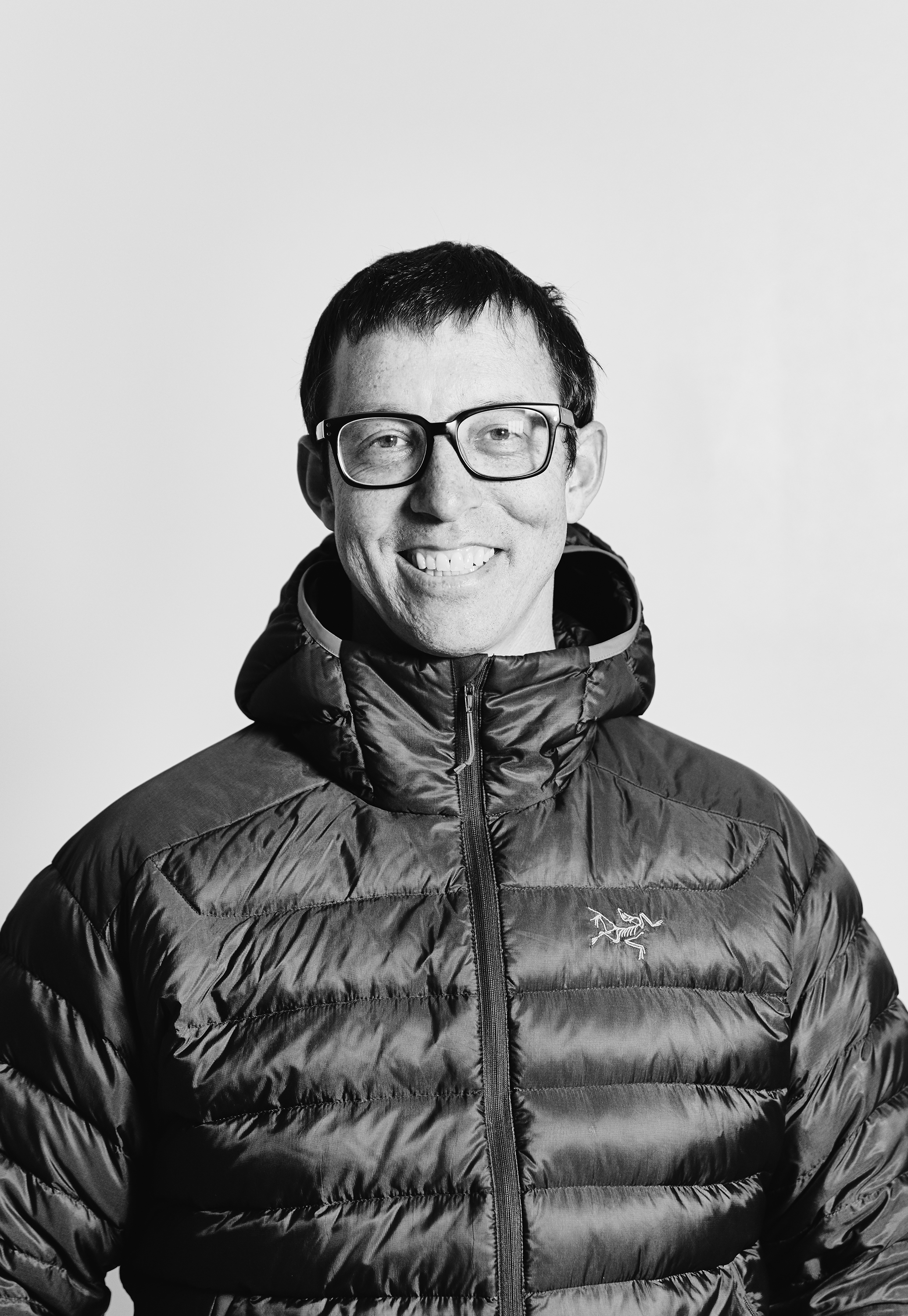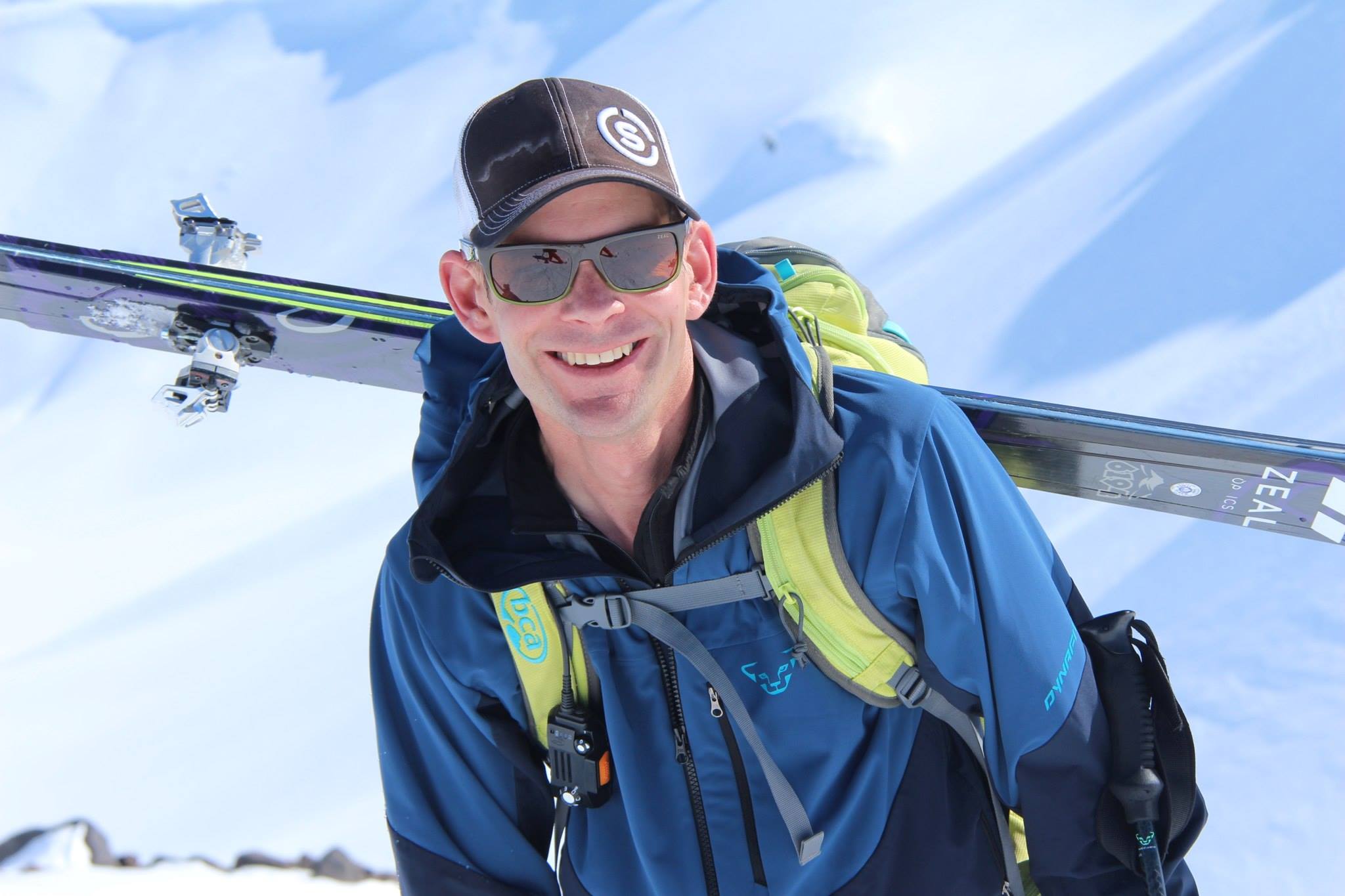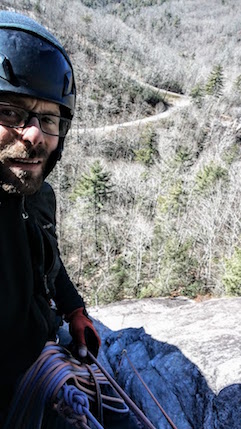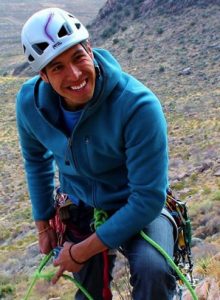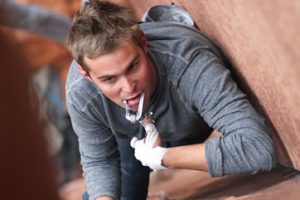2021 Arc’teryx Scholarship | Molly Massena
The 2020/2021 winter season will shortly be coming to a close. I am proud to say that I was able to successfully complete my Ski Guide Course in Stanley, Idaho this March; roughly one year after things had shut down for the Covid-19 Pandemic. This last year

Bald Mountain Sidecountry, Basset Zone, L to R (Lelani Bruntz, Skylar Herbert, Zach Snavely, Farmer)
has been tough on everyone, which makes me feel even more thankful that I was chosen to be the recipient of the Arcteryx Scholarship through the AMGA. Without this scholarship I do not think it would have been possible for me to attend the course this winter. On top of that, I had begun doubting my career choice as the pandemic clearly exposed the fragility of the guiding life. Not only did the Arcteryx Scholarship and the AMGA boost my confidence in my ability to pursue my passions, but it has alsohelped me renew my feelings that I am exactly where I should be.
I have been wanting to do the Ski Guide Course for several years now, however, I was a bit timid about whether I was actually ready for it. With that said, I believe that my preparation put me in a place where I was able to thoroughly enjoy and learn throughout my SGC. I felt I had adequate skills and knowledge to be a solid team member to my fellow course participants, which in turn meant that we had a total blast those 10 days.
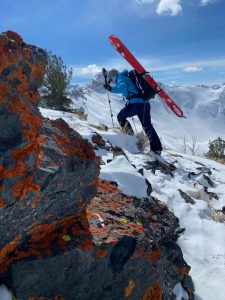
Lichen It, Hiking Titus Ridge, Molly Massena – Photo credit Lelani Bruntz
Of the eight course participants, four of them were women. As someone who is normally the only female in outdoor industry courses/training, and who only just recently had my first female instructor on a course this winter, I was happy to see that. I couldn’t’ help but think that maybe as I step further into the ski guide world, I could possibly show encouragement and comradery to other women who find themselves skiing up big snowy mountains in order to shred them on the way back down. Hopefully someday we won’t be so few and far between.
Our first day consisted of practicing the beacon rescue drill outside of Ketchum at the Baker Beacon Park. We dug holes, buried beacons, searched for them, probed and unburied them for the better part of the day. All of us not knowing one another, we chatted and politely encouraged each other.
The next few days were spent skiing the Sun Valley Ski Resort side country. First led by our instructor and then the next day led by us students. At this point it hadn’t snowed in over a week, and the bottom 10-40cm of the 100cm snowpack in this area were some of the largest basal facets I’ve ever seen. It was that third day when we had to each guide a portion of the day’s down guiding that I think we really started to grow as a team. Between on-sight guiding and trying to find the optimal snow conditions given the time of day, we strategized with one-another and helped each other figure out where we could harvest the best snow. After a solid day of mostly good skiing, we had smiles on our faces and gained trust in one another.
I want to pause here and mention how I feel skiing, and the Ski Guide discipline is different from other activities we pursue. Going into the backcountry is an exciting but also dangerous activity. Even though the SGC is the first AMGA course in the Ski discipline, it takes many years to build the skills and fill the requirements necessary to participate. By the time you take this course you should be an advanced skier who has taken recreational as well as professional level avalanche courses. All of which have their own prerequisites. Your resume goes further than just the avid weekend recreationalist, and you must have completed either the Alpine Skills Course or the Rock Guide Course. Most of the participants were already ski guiding and had strong backgrounds in the ski industry. A huge “Bravo” goes out to all those on the course who have shown hard work and dedication to pursue this avenue. Ok, pause complete.
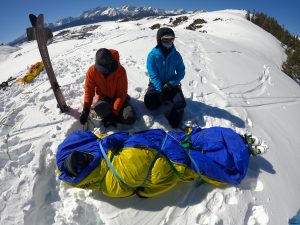
Rescuing Zach, L to R (Zach Snavely, Skylar Herbert, Molly Massena) – Photo credit Lelani Bruntz
Days four through six we were able to do some amazing ridge walking, harvest some pow stashes as well as corn, summited quite a few peaks, learned each other’s styles (a few mutiny’s may have been involved), and overall learned more about what it takes to be a good ski guide. By this time, we had become a solid crew, moving effectively and efficiently through terrain. We were all leading various legs of our day, each with their own challenges. From AM/PM meetings, and tour planning, to more on-sight guiding, we took them in stride and were happy to talk-it-out when we needed some extra brains to help with certain decisions. All of the participants in my group were lucky to have a stellar instructor to let us learn and grow, sometimes the hard way, through doing.
Day seven we practiced some skills related to anchors and sled rescues. Unfortunately, a participant in the other group hurt her knee and we had to put our recently practiced skills to real use. Turns out they had to have surgery on the meniscus two days later but is thankfully recovering well!
Day eight marked our departure for our overnight into the Mt. Williams area of the Sawtooth Mountains. We skinned into camp and dug out individual snow caves where we would sleep for the next few days.
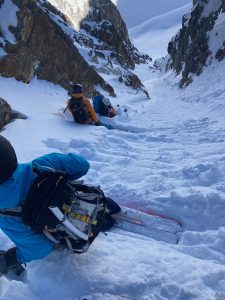
Setting up for Resurrection descent, Sawtooth Mountains, L to R (Molly Massena, Farmer, Lelani Bruntz)
Day nine we set our eyes on something called the “Resurrection” couloir and then a Mt. Thompson summit. In the couloir we got to practice our rope skills for a narrow, spicy section near the top. My 166cm skis touched rock on the tip and tails of this section. Nothing like using your new snow rope skills when you really need them! After that steep ski we toured around to Thompson and practiced our short roping skills over some rocky alpine terrain. This day really seemed like a solid culmination of the week leading up to it, and in turn felt extremely rewarding.
Our last day we skied a SW aspect of Mt. Williams before descending back out to the cars. With a more rapid warmup than expected we did not tag the top; however, we made some very solid decisions as a team and skied some great corn snow.
Despite various Covid precautions we had to take during our course, everything went quite smoothly the entire 10 days. By staying in “pods” our groups grew into solid teams. We all worked through the various housing and internet/zoom logistics. Although, I wouldn’t recommend digging your own snow cave if you can help it.

Titus Ridge Hiking, Galena Summit Area, L to R (Lelani Bruntz, Skylar Herbert, Molly Massena)
Looking back on this course/experience I feel quite invigorated about what’s next: at some point Canada will open back up and I will be able to continue my avalanche training progression by attending the Canadian Avalanche Association Operations Level 2: I have just completed another season as a Ski Patroller in the Pacific Northwest: I feel confident in the ski and guide abilities I have and have a clear idea of what areas I need to strengthen for the next AMGA course: It’s Spring in the PNW and that means it’s time to start getting after some more ski objectives!
Thank you for reading about my experience with the AMGA on my Ski Guide Course. And thank you again Arcteryx for giving me that little something extra I needed in order to achieve it this year.





